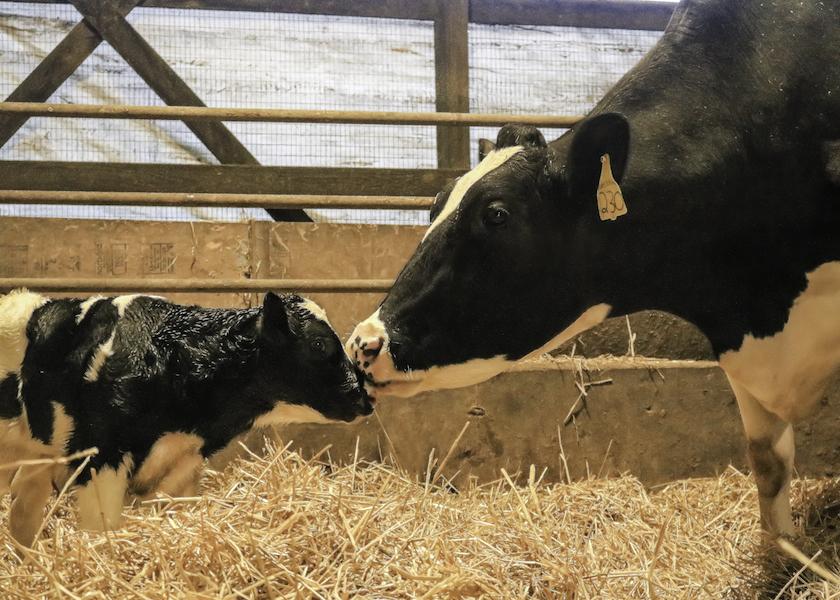These 7 Transition Period Diseases are Costing You Money

When you think about the animals who are costing your operation the most money, transition animals usually sort their way to the top. Generally, most production problems can be traced back to the dry or transition period, one of the critical time frames in a cow’s production cycle.
According to Michal Lunak, Extension Educator for Pennsylvania State University, the most common management diseases that occur during the cow’s transition period on U.S. dairies are lameness, mastitis, retained placenta, metritis, ketosis, hypocalcemia (milk fever) and left-displaced abomasum. Here’s a breakdown of just how much these seven diseases could be costing you.
Lameness: $120-$333
Laminitis, claw disease, digital dermatitis and foot rot can wreak havoc on transition animals. In fact, it is one of the top reasons cows are removed from the herd. According to a study conducted in 2010, different lameness cases can range from $120 to $216 per case. Similarly, a study conducted in 2017 reported that the cost of lameness averaged at $185 and $333 per primiparous and multiparous cows, respectively.
“Prevention and control of lameness includes good herd hygiene and management, prevention of infectious and non-infectious lesions, regular use of footbaths, consistent hoof trimming, elimination of slippery walking surfaces, and good nutrition,” Lunak says.
Mastitis: $325-$457
The number one reason cows are removed from the herd spurs from mastitis cases. On average, 18.6% of cows leave the herd annually due to udder infection, making it the second most costly transition disease, according to Lunak.
A study from 2015 reports that the direct cost for mastitis is $100 and $146 for primiparous and multiparous cows, respectively, and the indirect costs is $333 and $305. Another study in 2017 found that the total cost of a clinical case of mastitis was $325 for primiparous and $426 for multiparous cows, with indirect decreased milk production costs averaging at $162 and $165, respectively.
Retained Placenta: $150-$389
If the placenta or membranes is not expelled from the uterus within 24 hours after birth, a retained placenta could be the culprit. This transition disease can lead to several other diseases if not treated in a timely manner.
It’s estimated that the cost of a single retained placenta case can be $389, according to a 2018 study. The largest portion of the estimate was reduction in milk yield, $287, increased time until pregnancy, $73 and increased disease risk, $25. Another research study conducted in 2017 showed the difference of retained placenta costs between primiparous ($150) and multiparous ($313) cows.
“Prevention and control of retained placenta includes proper nutrition during the transition period, including adequate intake of selenium, and vitamin E. Retained placenta is commonly associated with hypocalcemia,” Lunak adds.
Metritis: $171-$386
Metritis is an inflammation of the uterus and is generally caused by bacterial infection. The risk factors for uterine infection include retention of the placenta, poor hygiene in the calving environment, twins, difficult calving, and a poor transition diet. In 2018, it was estimated that metritis cost the dairy industry between $665 to $900 million.
A 2008 study reported that a single case of metritis costs between $330 and $386 depending on the therapy used, amount of milk discarded and the number of extra breedings an animal may require. Similarly, a 2017 study found that a single case of metritis costs $171 and $262 for primiparous and multiparous cows, respectively.
“Prevention and control of metritis includes maintaining cleanliness of the calving area as well as working with your nutritionist to ensure proper rations for adequate intake of nutrients and good feeding management on the farm,” Lunak notes.
Ketosis: $111-$232
Ketosis is a common, metabolic disorder caused by a negative energy balance that typically occurs in cows early into their lactation. A 2008 study reported that the total ketosis cost was $232 per case, including $5 for the treatment.
However, a 2015 study notes that costs per ketosis case was $134 and $111 for primiparous and multiparous cows, respectively, with the average cost per case of $117.
“Prevention and control of ketosis includes maintaining good management practices such as: feeding good quality forage and balanced diets, minimizing stress, monitoring body condition at dry off and calving, and eliminating factors that reduce dry matter intake. Some feed additives, including niacin, calcium propionate, sodium propionate, propylene glycol, and rumen-protected choline, may help prevent and manage ketosis,” Lunak says.
Hypocalcemia (Milk Fever): $246-$300
Hypocalcemia, more commonly known as milk fever, results from loss of calcium into the milk and from inadequate dietary calcium intake. This imbalance in calcium metabolism occurs because calcium mobilization from bone into the serum pool is insufficient to maintain the efflux of calcium leaving through the mammary glands.
According to a 2018 study, milk fever affects between 25% to 40% of primiparous animals, and 45% to 80% of multiparous cows. The cost associated with this disease were between $246 and $300 for multiparous cows, according to a 2017 and 2018 study.
“Prevention and control of hypocalcemia generally occurs through modifications to the pre-fresh or close-up diet. Consult with your nutritionist about incorporating low calcium or potassium diets or feeding anionic salts for 21 days pre-fresh,” Lunak notes.
Left-Displaced Abomasum: $432-$639
A left-displaced abomasum is the costliest transition disease out there. It is the most predominant type of displaced abomasum in the U.S. and typically occurs within the first few weeks after calving.
A study from 2017 indicates that the cost associated with a left-displaced abomasum ranges between $432 for primiparous and $639 for multiparous cows, depending on if surgery is needed.
“Prevention and control should start in previous lactation when cows enter dry off period. Proper body condition score monitoring, prevention of other metabolic diseases, sufficient feed bunk space, dry matter intake, and proper particle size length are all important for prevention of left-displaced abomasums,” Lunak says.







